Rome, New York
1973
Yom Kippur War
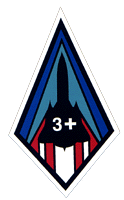

"Giant Reach"
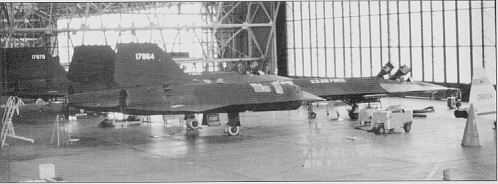
(Photo courtesy Tom Pugh)
OL-SB
Seymour Johnson AFB, North Carolina
SR-71 "Giant Reach" Operations
SR-71 pilot, Colonel Jim Wilson's recollection of one of the historic SR-71 flights to the Middle East during the Yom Kippur War in 1973 is reproduced below for the Blackbird Community.
Mort Jarvis adds: The whole history of this operation is pretty interesting, like flying the Detachment Package into England and than saying the SR can't land in England and turning around and going to Griffiss, NY. If the SR was still flying with the Real Time down link of Recon intelligence, which the SR was modified to carry prior to retirement, the target take could of been in the command function hands within seconds of the take. I still think the SR-71 could do a better job than what Intel is being obtained now.
Col. Jim Wilson, USAF ( Ret.) Writes:
On Oct 6th 1973, Egypt and Syria opened an offensive against Israel on two fronts, launching a coordinated series of air, armored and artillery attacks into the Sinai and Golan Heights . The preemptive strike came as a result of a failure to resolve territorial disputes arising from the Arab-Israeli War of 1967.
Since no diplomatic progress was being made toward peace, Egypt 's Sadat was convinced that to gain legitimacy at home, he must initiate a war with limited objectives.
Along the Suez Canal, 80,000 well-equipped members of the Egyptian army crossed the Suez and attacked fewer than 500 Israeli defenders. And in the Golan Heights , approximately 180 Israeli tanks faced an onslaught of 1,400 Syrian tanks.
Initial Israeli military losses were significant. And assistance was requested from the USA .
At that time, our reconnaissance satellites didn't have the capability to provide the intelligence needed to sufficiently assess the situation. So, we were alerted to prepare to fly SR-71 missions over the area of conflict, then recover in England . It was a mission within the design capability of the aircraft, although such a long, logistically-difficult mission never previously accomplished.
Within the first few days of the conflict, the supporting Arab nations initiated an oil embargo, making oil a weapon of war and contributed to a decision by the British government to deny us a recovery any place in England .
A Plan B was rapidly drawn up to fly the SR-71 out of the East Coast, then recover back in New York at Griffiss AFB. These newly planned 12,000 mile missions would require (5) five air to air refuelings from (16)sixteen KC-135 tankers based in Spain .
In the utmost secrecy, we mobilized and deployed. A few days later, our first photo/electronic reconnaissance mission was successfully completed.
I was a fairly young pilot in the squadron, with only 120 hours of SR-71 time under my belt. I was assigned to fly a backup SR-71 and to stay at Griffiss in an alert posture, and be prepared to fly follow-on missions. Then I served as back-up alert on two more successful missions.
My turn to be the primary aircraft came up next. The excitement level was high. And I certainly wanted to be part of another success.
Takeoff was at 2AM on a brisk and clear autumn night with about fifteen inches of snow already on the ground. It was peacefully calm . . until I lit both of the 34,000 lb. thrust afterburners.
The first 450 miles had to be flown subsonic at .9 Mach, since we had to clear the commercial aircraft flight tracks off the East Coast before I could safely re-fuel. Most pilots don't know the true meaning of dark until they've been in a situation like this. You might compare it to refueling in an inkwell. I then made made three radio silent electronic rendezvous with three tankers out over the North Atlantic before dawn . . taking on 10,000 gallons of fuel.
After completing a few post-refueling checks, I lit the afterburners and started my acceleration to a leisurely Mach 3 cruise across the Atlantic . The airplane performed flawlessly, thanks to the extra special effort by the maintenance guys.
About 2000 miles across the Atlantic , I watched with excitement as the sun came up right in my face, giving me a nice vantage point.
The next refueling was a couple hundred miles north of the Azores . I took on another 10,000 gallons from a couple more tankers.
I started my second acceleration and headed for Gibraltar . At 80,000 feet, cruising through the center of the narrow straits with clear weather and 100 miles of visibility on both sides. Spectacular.
Then I proceeded down the Mediterranean toward Israel where the weather was becoming worse as per flight plan's forecast.
The third air refueling south of Crete , although in poor weather, went along as scheduled. Now packing in a full load of 80,000 lbs of JP-7 fuel, I lit the afterburners and started the acceleration toward the target area.
At maximum fuel flow in full afterburner, a RED engine oil quantity low light illuminated steady on my emergency warning panel.
In almost unbelief . . I momentarily stared at it !
I instantly scanned oil pressure, rpm, exhaust gas temperature, nozzle position for other indications of trouble. Although there were no confirming indications of problems, I couldn’t just ignore the situation and continue on into the target area with the possibility of an engine failure at supersonic speed out over the Sinai.
We had no viable emergency airfields that could handle the SR-71. And I certainly did not want to be a no-notice, no-flight plan, single engine emergency arrival at David Ben Gurion airport in Tel Aviv. Especially, since the Israeli government had not been told about our missions, and they were focused on major battles for their own survival.
I took the engines out of afterburner to access the situation, and think about the best course of action.
Then I had a pleasant surprise.
After coming out of afterburner the critical red warning light went out. I became fairly-well convinced that it was a false momentary indication.
But it had cost me roughly 400 gallons of critically needed fuel. My tankers were now 80 miles behind me . . and they were moving further away each second. And re-joining them to top off fuel, would present a whole new set of problems [ I won't get into.]
I decided to re-light the burners and press on. I had a 5 second flash of the same red light during acceleration. Then it went out. Stayed out.
My flight track went down the Suez past Cairo before making a left turn at Mach 3.15 to cross the battle lines in the Sinai. With panoramic and specific point cameras providing imagery of hundreds of targets on both sides of the SR-71, I flew North across the Dead Sea and Golan Heights . Approaching Lebanon , I made a sweeping right turn out over Syria and then back to the Sinai on a parallel flight path for maximum coverage. The airplane was running well. I pushed it up a bit to Mach 3.2 before exiting Egypt near Port Said .
Once out over the Mediterranean , I started a descent to 25,000 feet to hit my fourth set of refuelers.
But as fate would have it, I was not only beong low on fuel because of my previous oil low warning problem, but now a thunderstorm had reached up and it was now enclosing the air re-fueling contact point.
Using our internal electronic azimuth and distance measuring equipment, my backseater got me to within less than a mile behind my tanker. But now, visibility was so poor that I could not see it.
In lousy weather, very low on fuel, I continued twenty miles down the refueling track. By this time, there was just one-half mile and 1000 feet of separation from the tanker.
Small break between the clouds. Hooked up.
I had less than 15 minutes of fuel left, when we made re-fueling contact with the tanker and started transferring. The nearest emergency runway was roughly 100 miles away on Crete .
Needless to say, I was very thankful to my tanker buddies, backseater, and good equipment for that rendezvous. What a relief ! It gave me an entirely new meaning to ' finding a gas station ' . . when I really needed one.
We completed a fifth 10,000 gallon air refueling near the Azores before proceeding on a leisurely Mach 3 flight across the mid-Atlantic to a landing at Seymour Johnson.
Within 20 minutes, our people had the photo and electronic intelligence equipment downloaded, then onboard a dedicated AF courier flight to a Photo Interpretation Center in D.C.
Including 6 hours 41 minutes of supersonic speed, the round-trip flight covered more than 12,000 miles in 10 hours 49 minutes.
After landing, I remember wondering what Lindbergh would have thought about the amazing advancements in aviation technology.
These missions were not declassified until the early 1990's when the SR-71 program was closed at the end of the Cold War. Most of the remaining birds are now in various museums.
The one I flew is the centerpiece at SAC's Air and Space museum near Omaha .
Col. Jim Wilson, USAF ( Ret.)
[abridged
]
SR-71 Photo Archive taken at Seymour Johnson AFB during the Yom Kippur War Operation "OLSB"
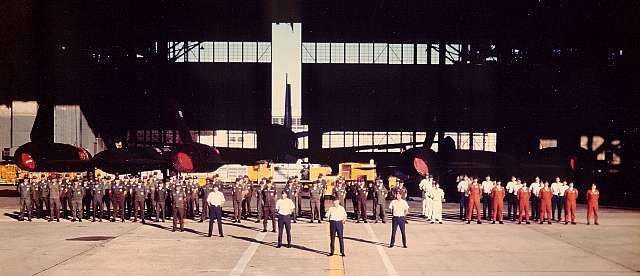
Entire SR-71 crew at Seymour Johnson AFB, North Carolina during the Yom Kippur War 1973.
The following personnel participated in the first missions flown out of OLSB. Additional crewmembers (not listed) also participated in these missions. This is the manifest for the Wing Staff personnel on the left and Maintenance on the right.


The following photos are the only ones known to exist of the SR-71 Operations at Seymour Johnson from October, 1973 to April, 1974. At the time, Seymour Johnson was in the process of an ORI (Operational Readiness Inspection) with their B-52's and KC-135's. The Seymour Johnson Wing Commander was not the least bit impressed when we showed up with a DOD directed mission (Yom Kippur War Flights). He was irate about usage of his facilities (We cleared out one of his large hangars and put the two SR's, KC-135Q and our mobile film processing center in the hangar). Additionally, he complained of fuel usage from his facilities by the 9th SRW. A phone call to the Pentagon by 9th SRW Commander Colonel Patrick Halloran resulted in the following, as Pat said: "The problems just went away". The critical war assessment missions were flown as scheduled and we departed Seymour Johnson in April of 1974. I am sure they were glad to see us go home.
The photos show the trailer which was purchased and moved into the hangar for SR-71 Operational Control and the Photo Processing Center which was comprised of 2X4's and plastic sheeting to keep the dust out. The two SR's were parked side by side in the hangar with the KC-135Q tanker opposite the Blackbirds. The flights lasted 10 or 11 hours and in one instance, the Pilot had to be assisted out of the Blackbird. The photo reconnaissance "Take" resulted in conclusive evidence of the location of Arab and Israeli forces. The photos provided the President and Defense Analysts with firm decision making capabilities to help defuse the Yom Kippur War.
OL-SB Photo Archive
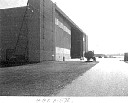 olsb001.jpg 27.67 Kb Hangar at Seymour Johnson where SR's #979 and #964 were parked for maintenance. |
 olsb002.jpg 20.42 Kb SR #979 in hangar at OLSB |
 olsb003.jpg 22.37 Kb SR #979 and #964 in hangar at OLSB. KC-135Q Tanker is parked opposite Blackbirds. |
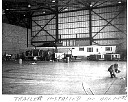 olsb004.jpg 55.49 Kb Trailer was purchased and used for Operations and Maintenance Job Control. |
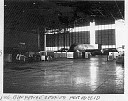 olsb005.jpg 41.11 Kb Logistic Bins from KC-135Q containing support equipment and Euclid tow tractor. |
 olsb006.jpg 34.26 Kb OLSB Job Control. TSgt Erden is shown here. |
 olsb007.jpg 20.08 Kb OLSB Job Control in trailer |
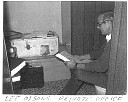 olsb008.jpg 41.30 Kb Lee Olson, Lockheed ADP at work |
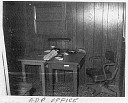 olsb009.jpg 38.40 Kb Lockheed Technical Rep's "Office" in trailer |
 olsb010.jpg 40.73 Kb Lockheed ADP Tech Rep |
 olsb011.jpg 28.71 Kb Mobile Processing Center (MPC) at OLSB |
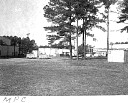 olsb012.jpg 47.34 Kb MPC (Photo Processing) Units at OLSB |
 olsb013.jpg 41.94 Kb Photo Shop and Dark Room at OLSB-Yom Kippur War. Tail of SR #979 shown here. |
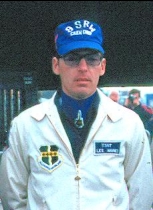 Editors
Note: Early on problems developed on one of the engines of aircraft #964.
In addition one of the wing walkers on a tow out of the hangar did not
notice the wing tip contact the hangar door until it was too late. Oops...I
think that troop is still trying to see sunshine. Damage required parts
being flown in from Edwards AFB. Even so, #964 did not see much of the
action in the Yom Kippur War. My assigned Crew Chief duties at Griffiss
AFB was with #979. She flew incredibly perfect, in my book, for these missions
knowing that there was no backup aircraft. In all operations, both at Griffiss
and Seymour Johnson, #979 flew two-thirds of the ten or eleven hour sorties.
She was a Blackbird that was second to none. I was full engine run qualified and before
leaving Griffiss there were attempts to run #964 but a full afterburner
run was required. As there were no tie-down facilities at Griffiss, a High
Speed taxi was ordered. I requested and received the pilot's approval to ride
in the back seat on a full afterburner test (successful) on the runway.
We never lifted off, but the ride was one hell of a treat for a country
boy.
Editors
Note: Early on problems developed on one of the engines of aircraft #964.
In addition one of the wing walkers on a tow out of the hangar did not
notice the wing tip contact the hangar door until it was too late. Oops...I
think that troop is still trying to see sunshine. Damage required parts
being flown in from Edwards AFB. Even so, #964 did not see much of the
action in the Yom Kippur War. My assigned Crew Chief duties at Griffiss
AFB was with #979. She flew incredibly perfect, in my book, for these missions
knowing that there was no backup aircraft. In all operations, both at Griffiss
and Seymour Johnson, #979 flew two-thirds of the ten or eleven hour sorties.
She was a Blackbird that was second to none. I was full engine run qualified and before
leaving Griffiss there were attempts to run #964 but a full afterburner
run was required. As there were no tie-down facilities at Griffiss, a High
Speed taxi was ordered. I requested and received the pilot's approval to ride
in the back seat on a full afterburner test (successful) on the runway.
We never lifted off, but the ride was one hell of a treat for a country
boy.
Leland Haynes, Webmaster, SR-71 Blackbirds
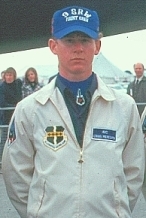
Special thanks to A1C Craig Meridith for his flawless contributions as Assistant Crew Chief on this operation.
Editor's Note: There is published in some SR-71 books and articles the following statement: "The Air Force Systems command deployed #955 to Griffiss AFB, New York under the code name "Black Knight". Using the cover story of evaluation of a new Electronic Counter Measures (ECM) suite of sensors Yom Kippur War missions were flown. This is not true. #955 flew into Griffiss in 1975 for the above mentioned evaluations. Mark McKenzie shot these photos of 955 at Griffiss in 1975.
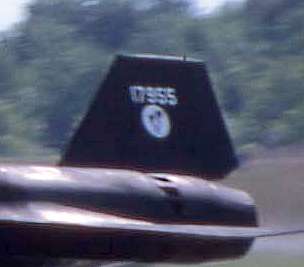
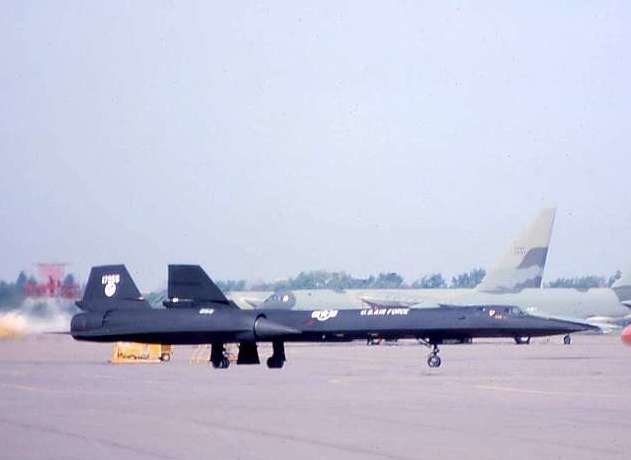
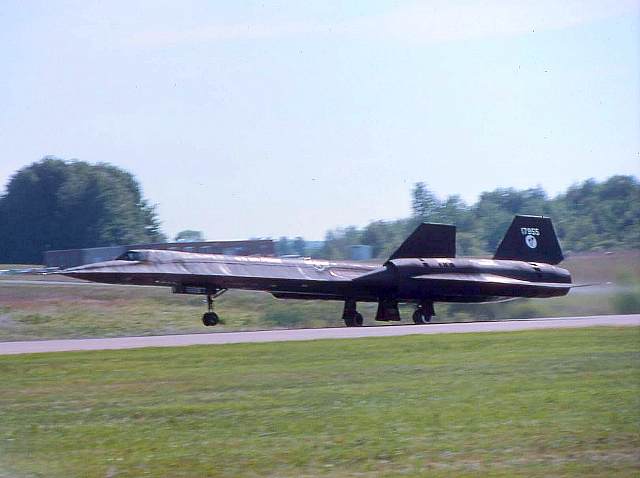
![]() Return
me to the Theaters of Operation Page
Return
me to the Theaters of Operation Page
| SR-71 Front Page | Links Page | Index Page | Recollections | 2001 Reunion |
| "SR-71 Blackbirds" Web Site Navigator | ||||
| First Created: April 15, 1996 - Last Revised: December 27, 2004 | ||||
| Copyright © 1996 Leland R. Haynes Email: sr71webmaster@sr71.us | ||||
Page #51 of the "SR-71 Blackbirds"